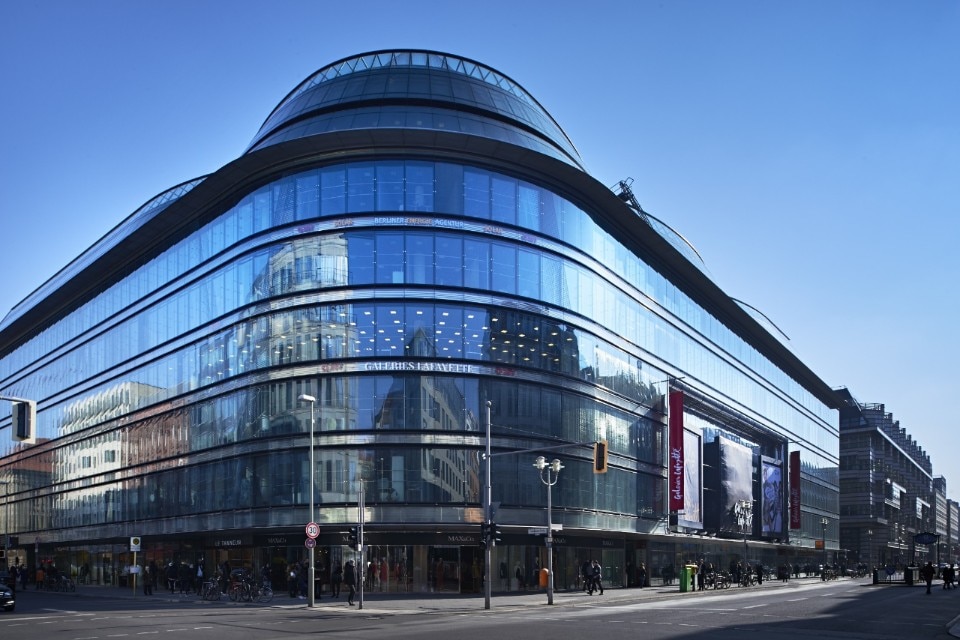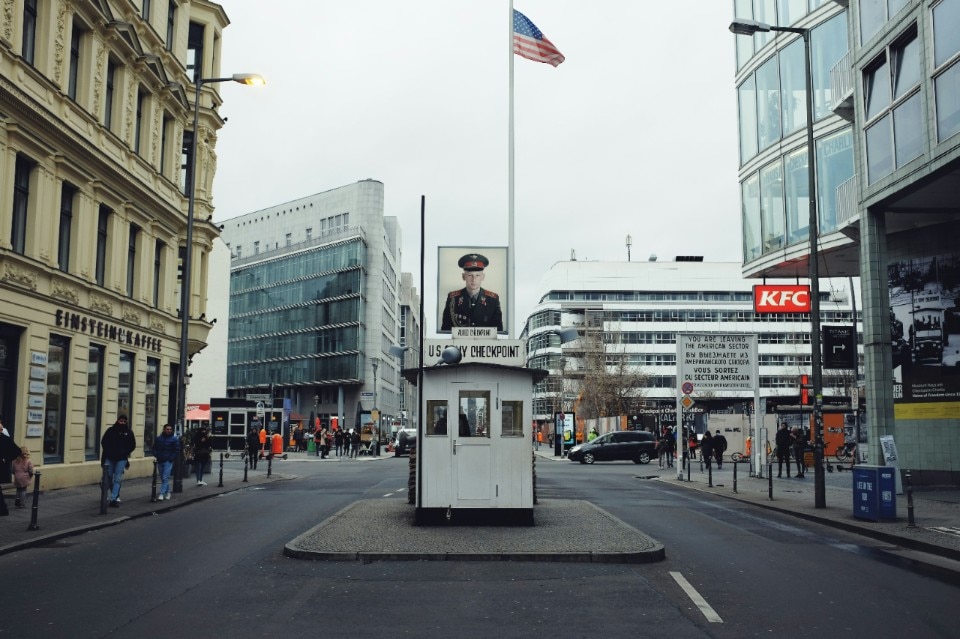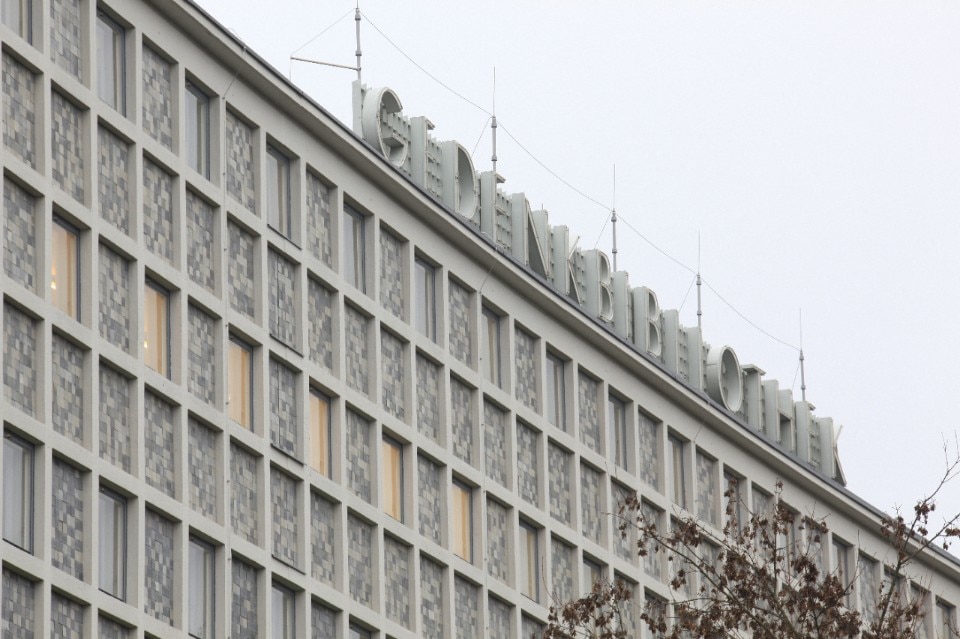Anyone visiting Berlin for the first time can hardly miss Friedrichstrasse – a 3.3-kilometer thoroughfare that cuts through the heart of the city from north to south, connecting the districts of Mitte and Kreuzberg: it stretches from the ex-squat Tacheles, renovated by Herzog and De Meuron, to the Mehrplatz, originally designed by Hans Scharoun, via Checkpoint Charlie and Unter den Linden. Recently, this historic street has once again stirred controversy in both local and national media.
What had been rumored for months has now been confirmed: the prestigious Galeries Lafayette in Berlin will permanently close its doors at the end of the year. This marks a significant setback for Friedrichstrasse, which, in the 1990s, pinned its hopes for revival on aspirations of luxury shopping following the fall of the Wall.

It was during this period that a trio of expansive commercial buildings, the so-called Friedrichstadtpassagen, was constructed: three large blocks bordering Friedrichstrasse between Mohrenstrasse and Französische Strasse, designed by the most prestigious names in international architecture. Linked by an underground pedestrian passage, the trio begins with Quartier 205, characterized by its austere lines reflecting designer Oswald Matthias Ungers’ passion for square forms. Quartier 206 follows, offering a postmodern reinterpretation of 1920s Art Deco glamor by Pei Cobb Freed & Partners. The ensemble concludes with Quartier 207, designed by the French architect Jean Nouvel and originally intended to house the first international branch of Paris’s iconic Galeries Lafayette.
A street in search of identity
Since their inauguration between 1996 and 1997, these three massive buildings have been the subject of intense controversy: deemed too large, too commercial, and too monotonous. Yet, particularly in their early years, they successfully emerged as key post-Wall Berlin landmarks, standing shoulder to shoulder with the newly reconstructed (and equally criticized for similar reasons) Potsdamer Platz and the Norman Foster-restored Reichstag. Seen as a symbol of hope, the Friedrichstadtpassagen represented a tangible manifestation of a positive narrative, harking back to the pre-war glory days when Friedrichstrasse thrived with theaters, cafes, and clubs that attracted large audiences.
La Friedrichstrasse potrebbe quindi vedere la coronazione di un sogno urbano lungo un secolo?

Unfortunately, reality did not live up to these expectations: despite huge investments, Friedrichstrasse never managed to establish itself as a new luxury shopping destination. The situation worsened after the opening of the Mall of Berlin at Leipziger Platz in 2014, just a short walk from the Passagen. Since then, an increasing number of store closures have confirmed the concerns of experts and analysts, highlighting Berlin’s lack of purchasing power to support so many commercial centers. This local problem is compounded by the broader uncertainty facing large shopping centers in the midst of the e-commerce boom.
Culture: a key to urban revewal?
In this challenging context, Joe Chialo, the newly appointed culture senator and Tanzanian-born former music manager, has pulled an idea out of his hat that could reshape the future of Friedrichstrasse: why not use Jean Nuovel’s building as the new home for the city’s central library (Zentral- und Landesbibliothek, ZLB)? Initially met with disbelief and skepticism when presented in August 2023, the concept quickly gained momentum and the local and national press made no secret of their enthusiasm for this ambitious initiative.

It’s easy to see why: Nuovel’s building is an interesting example of high-tech architecture, of which the French architect is one of the most famous exponents – on a par with Renzo Piano, Norman Foster or Richard Rogers. This modern library not only meets the essential criteria of accessibility, carrying capacity, and aesthetics, but also eliminates the need for costly renovations. With an expected daily footfall of 5,000 or more users, the library promises to bring much-needed publicity to Friedrichstrasse and contribute to its revitalization. Finally, it should be remembered that the desire to create a new central library in Berlin goes back more than a century. Despite repeated attempts, no government has been able to untangle this knot. Even Klaus Wowereit, the popular mayor of Berlin in the early 2000s, proposed a monumental library on the Tempelhof Feld, a vast urban space created by the closure of the airport. Unfortunately, his ambitious plan, featuring a brutalist spaceship designed by Kohlmayer Oberst Architects, was thwarted by a 2014 referendum that approved the demolition of Tempelhof Feld to turn it into an urban park.
The next few months will be decisive
Could Friedrichstrasse finally witness the realization of a century-old urban dream? It’s still too early to say: in its budget for the 2024/25 biennium, the Berlin city government did not allocate the necessary funds to unlock the conversion of the Galeries Lafayette. The reason is purely political. Over the years, significant interests have converged around the creation of a new home for the Staatsbibliothek. Before the Nouvel/Lafayette wildcard proposal, and after the setback at Tempelhofer Feld, the most recent plans were to expand the venerable Amerika Gedenkbibliothek in Kreuzberg and accompany it with a substantial new building. The architectural design for this structure would be determined by an upcoming competition. While not without risks in terms of cost and potential public opposition, this plan enjoys strong support from the influential local Social Democrats and is viewed favorably by the Grüne ecologists, who have a significant presence in Kreuzberg.

And while the Grüne seem to have fallen under the spell of Chialo’s idea, which has a clear green aftertaste (reusing an existing structure rather than creating a new one has clear environmental benefits), the SPD, which currently governs alongside the CDU under newly elected Mayor Wegner, has not really embraced Chialo’s proposal. Their opposition is quite obvious, accusing the senator of protagonism and unprofessionalism, while discreetly obstructing the plan.
Chialo remains determined to push forward with the project, garnering support from Berlin’s cultural community, the ZLB board, and a significant portion of the media and public. The next few months will reveal whether Jean Nouvel’s library will become a reality and, as its supporters hope, a rival to the modern city libraries recently built in Oslo, Birmingham, or Helsinki.

Ethimo's latest collection is all about weaves
Inspired by the traditional craftsmanship of Eastern Spain and patios, the new collection designed by Studio Zanellato/Bortotto reimagines the aesthetics of comfort.







